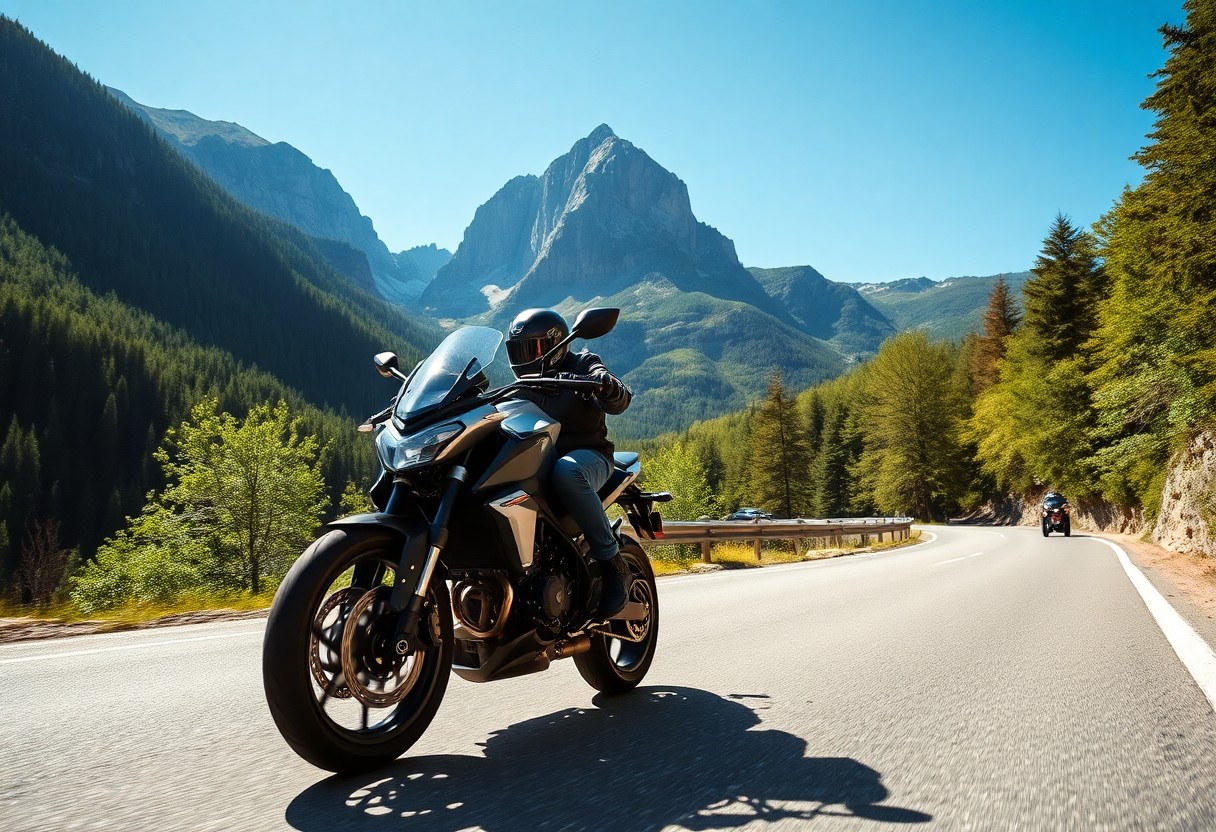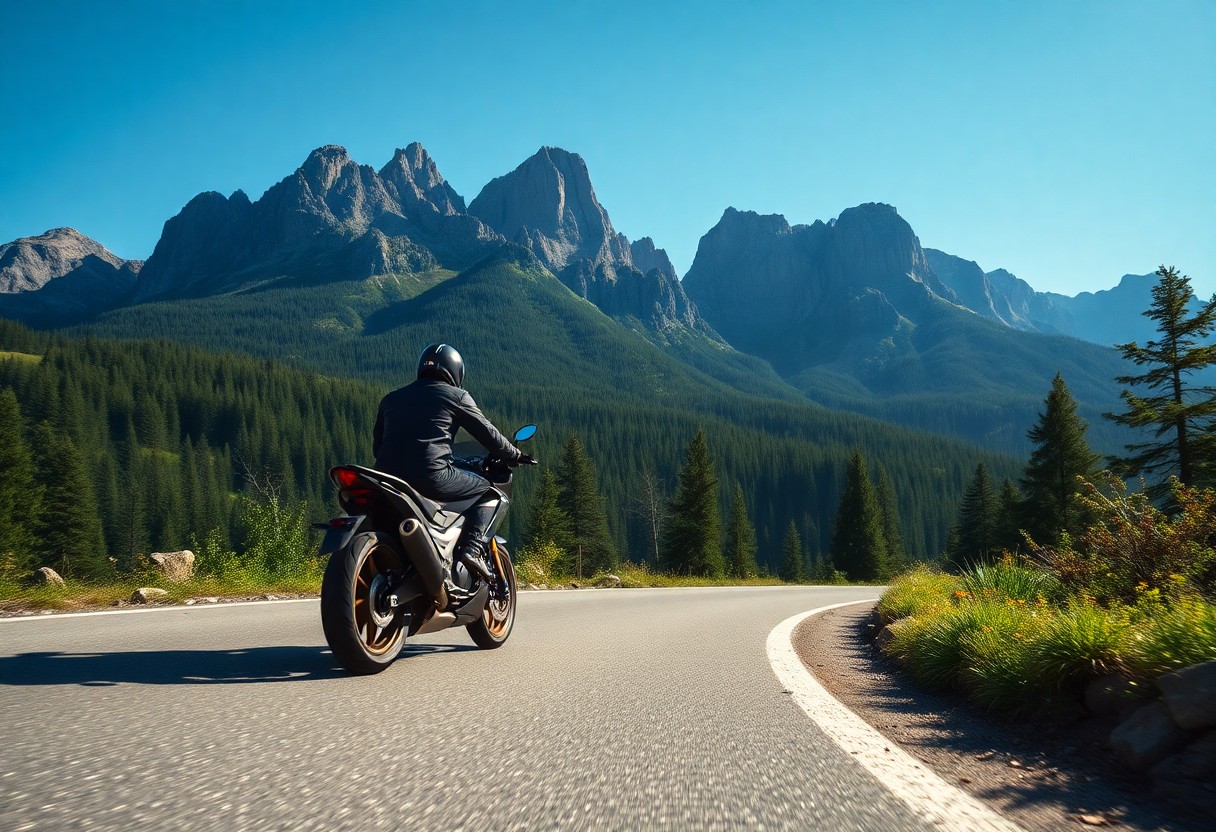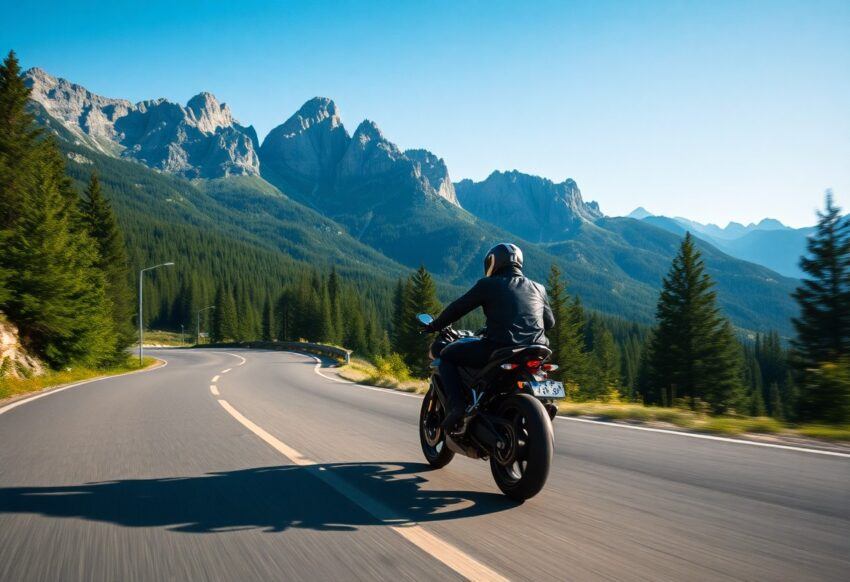With the thrill of navigating through breathtaking mountain landscapes comes the responsibility of riding safely and effectively. To ensure you enjoy your adventure while minimizing risks, it’s vital to focus on preparation, technique, and safety. You’ll face unique challenges such as varying road surfaces, steep inclines, and unexpected wildlife, making knowing how to manage these hazards imperative. For additional insights, check out these Tips for riding in the mountains. : r/motorcycles that can help enhance your experience and skills.
Key Takeaways:
- Preparation: Selecting the appropriate motorcycle, necessary gear, and a pre-ride checklist lays the foundation for a safe and enjoyable ride.
- Technique: Mastering riding skills tailored to mountain terrain, including balance on inclines and navigating various road surfaces, enhances overall control and safety.
- Safety: Being aware of environmental factors and potential hazards, as well as having a solid plan for emergencies, ensures a safer riding experience in mountainous regions.
Choosing the Right Motorcycle
While riding in the mountains offers breathtaking views and a thrilling experience, selecting the right motorcycle is important for safety and performance. It would be best to have a bike that can handle varying terrains, from steep inclines to loose gravel. Consider engine size, weight, and ergonomics to find a motorcycle that fits your style and comfort level.
Types of Motorcycles for Mountain Riding
Types of motorcycles suitable for mountain riding can significantly influence your experience. Here’s a breakdown:
| Motorcycle Type | Description |
| Dual-Sport | Lightweight, versatile for on-road and off-road. |
| Adventure Bikes | Designed for long-distance and rugged terrain. |
| Touring Bikes | Comfort and storage for extended rides. |
| Scramblers | Crossover bikes are suitable for rugged trails. |
| Sport Bikes | Performance-focused but less versatile on rough roads. |
Assume that you need a balance of power and handling. Choose a motorcycle that matches your skill level and the specific challenges of mountain terrain.
Essential Gear for Safety and Comfort
To enhance your riding experience in mountain regions, investing in important gear is essential for both safety and comfort. It would be best to focus on high-quality protective gear that accommodates the unpredictable weather and rugged terrain.
Gear like helmets, gloves, and jackets is necessary to protect against impacts and abrasions. A proper fit will keep you safe in case of an accident and ensure your comfort during long rides. It’s also wise to wear weather-appropriate clothing to handle temperature fluctuations and possible rain. Always carry a first aid kit and a few basics for mechanical troubles, as they can be lifesavers in remote mountain conditions. Prioritizing safety gear enhances your confidence and prepares you for the unpredictable challenges of mountain riding.
Pre-Ride Preparation
Any successful mountain ride begins with thorough pre-ride preparation. This process ensures that you have the right gear and your motorcycle is in top condition. By checking for imperative components like brakes, tires, and fluids, you enhance your safety and riding experience. Additionally, proper gear, such as helmets and weather-appropriate clothing, will help you adapt to changing conditions in the mountains.
Maintenance Checklist
One key aspect of preparation involves conducting a comprehensive maintenance checklist. Start by inspecting the brakes for responsiveness, ensuring that your tires have sufficient tread and pressure, and checking fluid levels, including oil and coolant. A quick visual examination of your motorcycle’s lights and signals can further enhance your visibility on the road. This proactive approach helps prevent mechanical failures during your ride.
Route Planning and Weather Considerations
Preparation for your mountain ride goes beyond just your motorcycle; it includes careful route planning and considering the weather. Assess your intended path for any potential hazards, such as wildlife or narrow roads, and always have alternate routes in mind. A well-thought-out route helps you navigate safely and allows time for sightseeing and enjoyment. Stay updated on the weather conditions, as sudden shifts in weather can significantly impact your ride. For example, if rain is in the forecast, consider postponing your trip to avoid hazardous, wet road surfaces.
Another important aspect is to keep an eye on the forecast for the mountain regions you’ll be traversing. This is critical since conditions can change rapidly; what starts as a sunny day can quickly turn into rain or fog. Pay attention to temperature fluctuations, especially at higher altitudes, as they can affect your motorcycle’s performance and your comfort. Judging the weather can make the difference between a thrilling adventure and a treacherous challenge.

Riding Techniques for Mountain Terrain
For successful mountain riding, mastering balance and control is important as you encounter varying inclines and rough road surfaces. Understanding how to shift your weight appropriately will help you navigate steep climbs and descents while preparing you for the unpredictability of gravel and wet roads. Staying aware of your surroundings and adjusting your speed accordingly will enhance your safety and enjoyment on these picturesque yet challenging routes.
Handling Inclines and Declines
It’s important to maintain a low center of gravity to tackle inclines and declines by leaning forward when climbing and shifting your weight back when descending. This technique not only enhances stability but also provides better traction. Use your engine braking effectively on declines to maintain control, allowing you to navigate steep slopes safely.
Navigating Curves and Switchbacks
Terrain that includes curves and switchbacks can be exhilarating, yet it requires your complete attention. It would help if you focused on looking through the turn to anticipate the direction and adjust your speed beforehand. Keep your body relaxed and lean into the curve, ensuring you maintain a smooth throttle to prevent loss of traction. Indeed, entering the turn too fast can lead to dangerous situations, so always assess the radius and adjust your approach accordingly. Understanding the layout and your motorcycle’s response will enhance your confidence and ensure safer descents into more complex mountain terrain.
Safety Measures and Hazard Awareness
After planning your mountain ride, it’s vital to prioritize safety measures and hazard awareness. This includes understanding potential threats such as wildlife crossings and narrow, winding roads that require heightened attention. For a deeper probe of safe riding practices, check out Tips for motorcycle riding in the mountains.
Understanding Mountain Hazards
Before hitting the road, familiarize yourself with the typical hazards of mountain riding. These can range from sudden weather changes to loose gravel and limited visibility caused by sharp turns. A keen awareness of your surroundings will help you navigate these challenges effectively.
Protective Gear Best Practices
Invest in high-quality protective gear before launching on your mountain adventure to enhance your safety. A well-fitted helmet, sturdy gloves, and weather-appropriate clothing significantly reduce the risk of injury in case of an accident. Ensure your gear is designed for mountain riding, as it will provide better protection against rain, and lower temperatures.
In addition to your primary gear, consider protective riding pants and jackets with reinforced padding. These can help you maintain optimal comfort and safety during your ride. Always check for visibility features such as reflective strips, especially in low-light conditions. A proper fit is vital—gear that’s too loose can get caught in moving parts, while overly tight gear may restrict mobility. Prioritizing these protective gear best practices ensures you have a safe and enjoyable riding experience on mountainous terrain.

Emergency Preparedness
Now that you’re ready to hit the roads, make sure you’re equipped for unforeseen situations. Having a solid emergency plan isn’t just smart; it could make all the difference in a tight spot. Check out these helpful Tips for Motorcycle Riding in the Mountains to ensure your adventure goes smoothly and safely.
Creating an Emergency Kit
For your mountain rides, assembling a comprehensive emergency kit is vital. Include items such as a first aid kit, a multi-tool, tire repair materials, and basic provisions like water and snacks. Don’t forget a flashlight and extra batteries—these can be lifesavers in unexpected situations and help you handle emergencies more effectively.
Communication and Assistance Strategies
Below are some necessary communication and assistance strategies to keep in mind while riding. Carry a charged cell phone, and consider downloading offline maps to navigate in areas with poor reception. You can also inform someone about your route and estimated return time. In case of an emergency, having reliable means to reach help can significantly reduce risk.
Further, ensure that your riding companions know how to respond in an emergency. Practice clear communication strategies before your ride, such as using hand signals. It’s also wise to have a backup plan, such as agreed meeting points in case someone gets separated. Having a satellite phone or a personal locator beacon can be a game changer in remote areas where cell service is lacking. By being well-prepared and knowledgeable, you can tackle any challenges while enjoying the magnificent mountain scenery.
Summing Up
Considering all points, riding motorcycles in the mountains requires a blend of preparation, technical skill, and safety awareness. By choosing the right bike and gear, mastering riding techniques for diverse terrain, and understanding environmental regulations, you enhance both your experience and safety. Make sure to have a solid plan for emergencies and communicate your route with others. Engaging with the motorcycle community can provide valuable insights and ongoing support, ensuring that your mountain riding adventures are not only enjoyable but also responsible.
FAQ
Q: What should I consider when choosing a motorcycle for mountain riding?
A: When choosing a motorcycle for mountain riding, consider the type that best fits your riding style and the terrain you’ll encounter. Dual-sport and adventure bikes are popular choices due to their versatility and ability to handle a variety of road surfaces. Ensure the motorcycle has features such as a comfortable seat, adequate suspension, and good handling capabilities. Additionally, make sure it’s suited for the weather conditions you may face, such as rain or chilly temperatures, and equip it with proper accessories like side racks for gear and off-road tires if necessary.
Q: What are some important riding techniques to master for navigating mountain roads?
A: Essential techniques include maintaining a balanced position on different inclines, which allows for better control over the motorcycle. Practice smooth and controlled throttle applications when approaching curves and switchbacks. It’s also important to learn how to properly use your body weight to steer, especially on steep and winding roads. Adapt to varying road surfaces by adjusting your braking and acceleration techniques; for instance, on gravel, you may need to brake earlier and rely more on your body to maintain balance. Regular practice in a safe environment will help improve these skills.
Q: How can I ensure my safety while riding in mountainous areas?
A: To enhance your safety in mountainous regions, begin by inspecting your motorcycle thoroughly before each ride, checking brakes, tires, and fluids. Be mindful of altitude, as it can affect both your motorcycle’s performance and your personal health; stay hydrated and give yourself time to acclimate if you’re riding at higher elevations. Familiarize yourself with potential hazards such as wildlife crossings, narrow roads, and sudden weather changes. Wearing appropriate gear, including a well-fitted helmet and protective clothing, is critical. Additionally, try to ride with a buddy whenever possible and carry a map or GPS device for navigation purposes.
